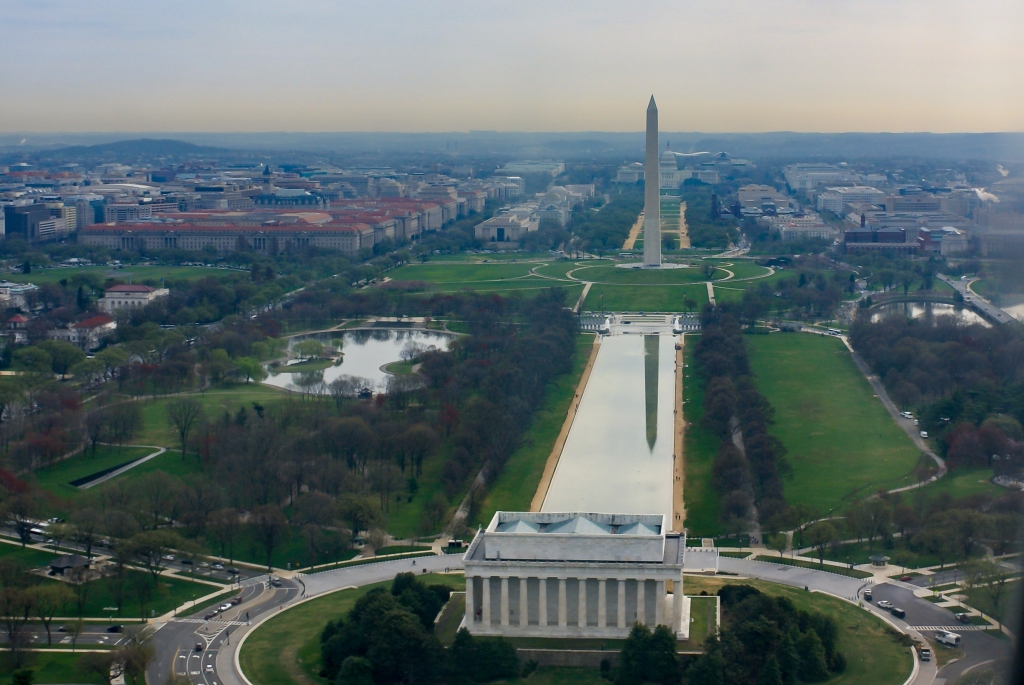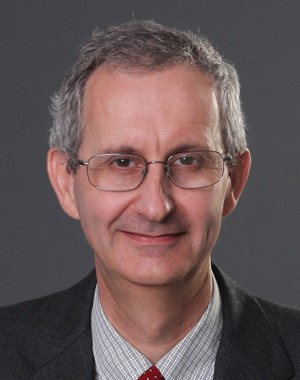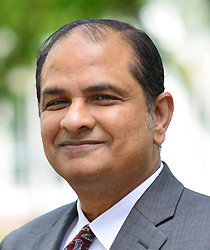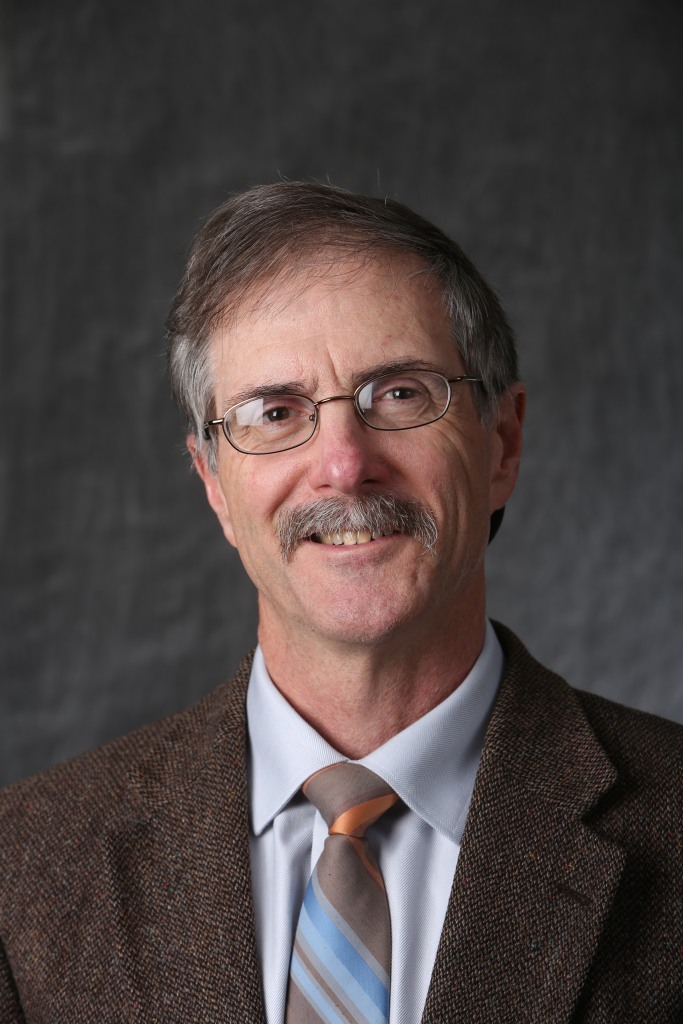
20th International Conference on Multibody Systems, Nonlinear Dynamics, and Control (MSNDC)
as part of ASME IDETC-CIE
Venue: JW Marriott Washington, Washington, DC, USA
Dates: August 25-28, 2024
Organizers:
Kiran D’Souza, dsouza.60@osu.edu
Grzegorz Orzechowski, grzegorz.orzechowski@lut.fi
Andreas Zwölfer, andreas.zwoelfer@tum.de
Andrea Arena, andrea.arena@uniroma1.it
Overview
The International Conference on Multibody Systems, Nonlinear Dynamics, and Control (MSNDC) is held annually at the ASME IDETC-CIE Conference. It is a premier meeting event for professional networking and research exchange across the multibody systems and nonlinear dynamics technical community. The conference facilitates the dissemination of fundamental research in the enabling disciplines as well as research into their application to engineered or naturally occurring mechanical systems across all length and time scales.
HIGHLIGHTS
Special issue of JCND Selected papers will be considered for journal publication
Student Paper Competition with cash awards
Best Paper Competition All full-length papers will be considered automatically.
Keynote Lectures
Olivier A. Bauchau

Olivier A. Bauchau
Geometric Algebra for Flexible Multibody Systems
Abstract TBA
Dr. Bauchau earned his B.S. degree in engineering from the State University at Liège, Belgium, and M.S. and Ph.D. degrees from the Massachusetts Institute of Technology. He is the Igor Sikorsky Professor of Rotorcraft at the Department of Aerospace Engineering of the University of Maryland, College Park. His fields of expertise include finite element methods for structural and multibody dynamics, rotorcraft and wind turbine comprehensive analysis, and experimental mechanics and dynamics. He is a Fellow of the American Society of Mechanical Engineers, a Technical Fellow of the American Helicopter Society, and Fellow of the American Institute of Aeronautics and Astronautics. He is associate editor for the Journal of Computational and Nonlinear Dynamics, Multibody System Dynamics, the Journal of Multibody Dynamics, and the Journal of the American Helicopter Society. He has authored a book entitled “Flexible Multibody Dynamics,” which has won the 2012 Textbook Excellence Award from the Text and Academic Authors Association.
Balakumar Balachandran

Balakumar Balachandran
Noise-Influenced Dynamics
Abstract TBA
Dr. Balachandran received his B. Tech (Naval Architecture) from the Indian Institute of Technology, Madras, India, M.S. (Aerospace Engineering) from Virginia Tech, Blacksburg, VA and Ph.D. (Engineering Mechanics) from Virginia Tech. Currently, he is a Distinguished University Professor and a Minta Martin Professor at the University of Maryland, where he has been since 1993. His research interests include applied physics, applied mechanics, applied mathematics, nonlinear phenomena, dynamics and vibrations, and control. The publications that he has authored/co-authored include a Wiley textbook entitled “Applied Nonlinear Dynamics: Analytical, Computational, and Experimental Methods” (1995, 2004), a Thomson/Cengage textbook (2004, 2009) and a Cambridge University Press textbook (2018) entitled “Vibrations,” and a co-edited Springer book entitled “Delay Differential Equations: Recent Advances and New Directions” (2009). He holds four U.S. patents and one Japan patent, three related to fiber optic sensors and two related to atomic force microscopy. He has served as the Editor of the ASME Journal of Computational and Nonlinear Dynamics, a Contributing Editor of the International Journal of Non-Linear Mechanics, and a Deputy Editor of the AIAA Journal. He is an ASME Fellow, an AIAA Fellow, a Fellow of the Royal Aeronautical Society, an ASA full member, and an IEEE Senior Member. He is a recipient of the ASME Melville Medal, the Den Hartog Award, & the Lyapunov Award, the ASCE Engineering Mechanics Institute Robert Scanlan Medal, and the AIAA Pendray Aerospace Literature Award.
D’ALEMBERT AWARD LECTURE – KURT S. ANDERSON

KURT S. ANDERSON
Adaptive Multibody Dynamics Formulations for Applications from Complex Spacecraft, to Biopolymers, to Space Debris
Abstract TBA
After receiving his BS degree in mechanical engineering from the University of California at Berkeley in 1982, Dr. Anderson went on to earn a MS in the area of dynamic systems and control from the same institution. He then spent the next few years working in the areas of dynamics, structural dynamics, and controls for TRW Space and Technology in Redondo Beach, California. After this period, he entered the Ph.D. program in Applied and Computational Mechanics at Stanford University, earning his degree in 1990. Dr. Anderson then accepted a position as researcher and principal dynamics engineering at TRW where he was associated with various spacecraft and research programs. In late 1991 Dr. Anderson was invited to Germany for a two-year period as a visiting scholar, lecturer, and research fellow at the Technische Hochscule – Darmstadt. In 1993 he joined the faculty of the Department of Aerospace Engineering, Applied Mechanics, and Aviation at The Ohio State University, in Columbus where he remained until coming to RPI as faculty member in August 1995.
Call for Papers
Paper submission
Full-paper submission
- Recommended Length: 10 pages
- Best Paper Award: All papers are automatically considered for this award.
Submission templates
Presentation-only submission
- Submission Process: Submit an extended abstract (maximum 2 pages) that describes the presentation to be given. The deadline for these is later than the full paper deadline.
- Review Process: The extended abstract will be reviewed for relevance to the conference.
- Publication Information: The abstract will be used only in the review stage, and will not be published in the proceedings. Thus, the work will also not be copyrighted by ASME.
Student Paper Competition Information
Finalists of the Student Paper Competition will be awarded cash prizes
Submission Guidelines
- Please submit your paper as a regular “technical paper publication” on the conference submission site (select MSNDC). The conference organizers will identify the papers eligible for the student paper competition.
- Please submit to the symposium that best matches the technical content of the paper.
There will be no direct submissions to student paper competition.
During the submission of your work, check the box:

- ELIGIBILITY: The lead author and presenter must be a student
- The 10-page maximum limit will be strictly enforced to ensure fairness. Competitive papers longer than 10-pages may be asked to resubmit a 10-page version prior to final evaluation.
The anticipated evaluation criteria are listed below to aid the authors. Both the paper and presentation will be evaluated.
Manuscript Evaluation
- Originality:
- Distinguishing the paper from the authors’ previous work
- Distinguishing the paper from the research in that area
- Technical content and quality:
- Literature review
- Method description
- Results and analysis of the results
- Novelty of the method
- Relevance and contribution:
- Relevance of the paper to the symposium topic
- Contribution of the paper to the symposium topic
- Organization and clarity:
- Fluency of the paper
- Definition of the mathematical terms and concepts used in the paper
- Quality of the figures
- Relevance of the figure captions with the content of the figures
- References to the figure in the text
- Necessary information about the paper and contribution in the abstract and conclusion
Presentation Evaluation
- Introduction:
- The research question/hypothesis was clearly stated.
- The goals and specific objectives were presented.
- The project had sufficient, supporting background.
- Methods and results:
- The methods were clearly outlines/explained.
- The presented acknowledged limitations of the study.
- The results were clearly explained/highlighted.
- Conclusions:
- A review/summary of the project was presented.
- The significance of the results was discussed.
- The applicability of the results was discussed.
- Presentation style:
- Presentation was clear, readable, well-structured, and logical.
- The presentation fit into the allotted time.
- The student seemed knowledgeable, exhibited good voice projection and confidence, and responded well to questions from the audience.
Deadlines
- Submission of Full-Length Paper: March 20, 2024
- Presentation Only: April 22, 2024
- Reviews Completed: April 29, 2024
- Author Notification: May 06, 2024
- Copyright Form Deadline: May 24, 2024
- Final Paper Submission: May 27, 2024
- Registration Date: TBD
Symposia
MSNDC-01 Machine Learning Applications in Dynamics and Vibrations
(Cross-Listed with VIB-05)
Amin Ghadami, University of Southern California, ghadami@usc.edu
This symposium aims to bring together researchers at the intersection of machine learning and dynamical systems. Machine learning has shown significant promise in revolutionizing the field of vibrations and dynamics, offering novel techniques to understand, model, and control complex dynamic systems. This symposium will showcase cutting-edge research, methodologies, and applications that leverage machine learning in the domain of vibrations and dynamics. Topics include but are not limited to:
- machine learning-based time series analysis and prediction in dynamical systems;
- machine learning-based reduced order modeling in dynamics and vibrations;
- feature extraction for vibrations and dynamics;
- integration of physics-based models and machine learning for improved understanding;
- machine learning-based predictive maintenance and condition monitoring of mechanical systems.
MSNDC-02 Time-delay, Time-varying and Discontinuous Dynamical Systems
(Cross-Listed with VIB-08)
Ashu Sharma, Auburn University, azs0111@auburn.edu
Vipin Kumar Agarwal, University of Memphis, vipin.a@memphis.edu
This symposium aims to bring together experts and enthusiasts in the field of dynamical systems to discuss the latest developments, challenges, and applications related to systems with time-delays, time-varying dynamics, and discontinuities. Topics include but are not limited to:
- modeling, analysis and control of time-delay or time-varying systems;
- theoretical foundations and practical implications of discontinuity;
- control strategies for these types of systems;
- applications of time-delay, time-varying, and discontinuous systems in engineering and physics.
MSNDC-03 Industry Applications of Vibration, Shock, Acoustics and Dynamics
(Cross-Listed with VIB-09)
Ata Donmez, The Ohio State University, donmez.4@osu.edu
Isaac Hong, The Ohio State University, hong.250@osu.edu
The symposium on Industrial Applications of Vibration, Shock, Acoustics, and Dynamics provides a forum for sharing ideas, activities, best practices, and innovative solutions to applied problems faced by industry, national laboratories, academia, and related partners. Applications ranging from the automotive industry to national defense increasingly require innovative analysis, simulation and testing to solve complex problems involving vibration, acoustics, and dynamics phenomena. Abstracts are invited that cover standard and nonstandard, multi-disciplinary, and systems-level techniques in vibration, acoustics, dynamics, and related areas of application.
MSNDC-04 Optimization, Sensitivity Analysis, and Uncertainty Quantification in Dynamic Systems
Radu Serban, University of Wisconsin-Madison, serban@wisc.edu
Antonio Recuero, Idaho National Laboratory, amrecuero85@gmail.com
The symposium focuses on recent advances in theoretical, computational, and applied aspects related to optimizing the performance and reducing the cost of complex dynamic systems, potentially involving multiple disciplines and phenomena. Topics addressed include design synthesis and analysis, optimal control, sensitivity analysis, uncertainty quantification and verification & validation, multi-objective optimization, optimization under uncertainty, topology optimization, etc.
Submissions are welcome on the following and related topics: sensitivity analysis; optimal design and control; simulation under model and data uncertainty & optimization under uncertainty; design of computational experiments; reduced-order models and surrogate models; multi-objective and multi-disciplinary optimization; engineering applications of sensitivity analysis; uncertainty quantification, and optimization; algorithms and tools development.
MSNDC-05 Modeling and Simulation of Vehicle Dynamics and Mobility
Hiroyuki Sugiyama, University of Iowa, hiroyuki-sugiyama@uiowa.edu
José Escalona, University of Seville, escalona@us.es
Paramsothy Jayakumar, US Army GVSC, paramsothy.jayakumar.civ@army.mil
Topics of interest include, but are not limited to: vehicle modeling and simulation, tire/terrain and track/terrain interactions, autonomous vehicle mobility, wheel/rail contact, vibration and ride comfort, vehicle control, vehicle stability, suspension and steering designs, hardware-in-the-loop simulation, human factor research, verification and validation (V&V), and next generation simulation tools.
MSNDC-06 Dynamics of Biological, Bio-Inspired and Biomimetic Systems
(Cross-Listed with VIB-07)
James R. Chagdes, Miami University, james.chagdes@miamioh.edu
Adam Kłodowski, LUT University, adam.klodowski@lut.fi
This symposium brings together a diverse set of researchers who are at the forefront of the emerging field of studying the dynamic aspects of Biological, Bio-inspired and Biomimetic Systems. Researchers conducting traditional or non-traditional academic research, or those driven by industrial applications present their experimental, analytical, and computational studies with Biological, Bio-Inspired and Biomimetic Systems at their focus.
MSNDC-07 Contact Dynamics and Jointed Structures
(Cross-Listed with VIB-03)
Dan Negrut, University of Wisconsin-Madison, negrut@wisc.edu
Wei Hu, Shanghai Jiao Tong University, weihu@sjtu.edu.cn
This symposium is focused on the study of mechanical joints, contact, friction, and damping. The goal of this symposium is to promote discussion and a better understanding between these topics and to generate new perspectives on the linkage between friction at a tribological level, contact mechanics, and the responses of built-up assemblies containing joints at a structural level. All papers concerned with the dynamics and mechanics of jointed structures, contact, friction, and damping are invited for this symposium, with particular emphasis on the following challenges:, hysteresis in jointed structures, repeatability and variability of the response of jointed structures, complex loading methods, physical theories and studies of friction, measurements and predictions of energy dissipation and damping, and methods to account for uncertainty and nonlinearity in structures with joints, contact, friction, or damping, development and validation of predictive models of contact. Related topics, e.g., tribology studies, surface chemistry, frameworks for multi-scale modeling, gaskets, glued interfaces, etc., are invited as well.
MSNDC-08 General Dynamics, Vibration, and Acoustics
(Cross-Listed with VIB-01)
Daniele Zulli, University of L’Aquila, daniele.zulli@univaq.it
John W. Sanders, The Citadel, jsande12@citadel.edu
Jaroslaw Latalski, Lublin University of Technology, j.latalski@pollub.pl
This symposium welcomes papers in all areas of dynamics, vibration, and acoustics. The scope is intentionally broad, encompassing the theoretical and applied; linear and nonlinear; analytical, computational, and experimental; Hamiltonian and non-Hamiltonian; etc. Areas of special interest include, but are not limited to, the following:
• novel modal analysis techniques
• novel computational methods and algorithms
• applications of Lagrangian and Hamiltonian formalism
• conservative and nonconservative problems in dynamics
• variational principles applied to non-Hamiltonian systems
• vibration mitigation techniques
• cross-disciplinary problems and applications• gear vibration and rotating systems
MSNDC-09 Nonlinear Dynamics and Vibrations of MEMS and NEMS
(Cross-Listed with VIB-12 and MNS-01)
Dumitru Caruntu, University of Texas Rio Grande Valley, dumitru.caruntu@utrgv.edu
Alessandra Vizzaccaro, University of Exeter, UK, a.vizzaccaro@exeter.ac.uk
We invite papers for a Symposium on “Nonlinear Dynamics and Vibrations of MEMS and NEMS.” Topics of interest include, but will not be limited to: Electrostatically Actuated MEMS and NEMS; Sensors, Actuators, and Switches for Health Monitoring, Biology and Medicine; Linear and Nonlinear Dynamics and Control of MEMS and NEMS; Dynamics and Control Multi-Body Micro- and Nano-systems; Reduced Order Modeling; Atomic Force Microscopy; Multi-Scale Modeling, and Microfluidics; Coupled Thermal, Electrostatic, Magnetic, Elastic MEMS/NEMS Systems.
MSNDC-10 Nonlinear Dynamics of Systems and Nonlinear Phenomena
(Cross-Listed with VIB-02)
Stefano Lenci, Polytechnic University of Marche, lenci@univpm.it
Richard Wiebe, University of Washington, rwiebe@uw.edu
Ashu Sharma, Auburn University, asharma@auburn.edu
Most real-world engineering problems confront behaviors neither linear nor nearly linear. Research is stimulated towards exploring a galaxy of nonlinear dynamics phenomena, terrain for exciting applications that have multiplied throughout engineering, biological ecological sciences, beside the ever-vibrant fields of mechanics and physics. We are witnessing a blossoming of important and exciting new applications far beyond the known restrictions. The Mini Symposium “Nonlinear Dynamics of Systems and Nonlinear Phenomena” invites theoreticians, computationalists, and experimentalists active in the fields of nonlinear dynamics of structures. The MS brings together experts to discuss problems and findings in the area of:
• Nonlinear Resonances, Phenomena, and Interactions
• Dynamic Systems with Time-Variability, Delay, or Discontinuities
• Reduced-Order Modelling
• Fractional Dynamics
• Structural Dynamics
• Flexible slender structures
• Nonlinear Energy Transfers and Harvesting
• Vibration and Stability of Systems
• Computational Methods
• Optimization and Control
• Sensitivity Analysis and Design• Nonlinear dynamics and fracture of composite structures
MSNDC-11 Dynamics and Control of Smart Structures and Systems
(Cross-Listed with VIB-06)
Andrea Arena, Sapienza University of Rome, andrea.arena@uniroma1.it
Francesco Danzi, University of California Merced, fdanzi@ucmerced.edu
The Symposium is focused on Dynamics and Control of Smart Structures and Systems across different scales, from the nano- to the meso-scale, including nanocomposites and metamaterials-based structures, and the macro-scale, including complex mechanical systems. The relevant systems involve innovative applications in the field of mechanical engineering. The symposium gathers researchers from industry, academia, and government agencies working in the most innovative areas of nonlinear dynamics and vibration to discuss recent developments in experimental, analytical, and numerical techniques as applied to the synthesis, characterization, and control of Smart Materials and Structures, and Complex Systems. Papers are welcome in the area of analytical modeling and numerical simulations of linear and nonlinear dynamic phenomena, numerical and analytical studies on the dynamic stability of systems, wave propagation and absorption, vibration control and experimental characterization of nonlinear dynamic behaviors. The symposium also intends to encourage interactions between theoretical and applied researchers working in the most innovative areas of nonlinear dynamics. The symposium will also be a great opportunity for disseminating recent developments of experimental, analytical and numerical techniques, and for discussing novel phenomena and behaviors characterizing smart materials and structures. The symposium “Dynamics and Control of Smart Structures and Systems” will cover, but will not be limited to, the following topics:
• characterization of the dynamic response of smart structures and systems.
• reduced-order modeling of smart structures and systems.
• nonlinear dynamics of continuous and discontinuous mechanical systems.
• analytical and numerical techniques to study the nonlinear dynamics of mechanical systems and structures.
• nonlinear dynamic phenomena and interactions in mechanical systems and structures.
• dynamic stability of nonlinear systems due to multiphysics interaction.
• experimental studies of observed linear and nonlinear dynamic phenomena.
• control of dynamical systems including time delay.
• wave propagation and absorption in smart structures and systems.
• bifurcations and chaos in dynamic systems.
• asymptotic methods in nonlinear dynamics.
• non-smooth systems.
• novel vibration control devices.• hybrid techniques that blend active and passive vibration control.
MSNDC-12 Computational Methods and Software Tools in Multibody Systems and Nonlinear Dynamics
Francisco González, University of A Coruña, f.gonzalez@udc.es
Olivier Brüls, University of Liège, o.bruls@uliege.be
Grzegorz Orzechowski, LUT University, grzegorz.orzechowski@lut.fi
The purpose of this symposium is to discuss novel and efficient methods and techniques for multibody systems and nonlinear dynamics. We welcome contributions on topics such as efficient algorithms and computational strategies, real-time simulation, Human/Hardware-in-the-Loop (HiL) and System-in-the-Loop (SITL) applications, haptics and simulators, co-simulation methods, fluid/structure interaction, reduced order models, and related areas of study.
MSNDC-13 Motion Planning, Dynamics, and Control of Robots
(Cross-Listed with MR-05)
Andreas Müller, Johannes Kepler University Linz, a.mueller@jku.at
Joo H. Kim, New York University, joo.h.kim@nyu.edu
Jeffrey W. Herrmann, Catholic University of America, herrmannj@cua.edu
Papers are solicited in the areas of motion planning, dynamics, and control of robots and mechanisms. Theoretical, experimental, and computational aspects are all invited. Topics of interest include, but are not limited to:
• Legged and mobile robots
• Serial and parallel robots
• Cable robot and tensegrity mechanism
• Dynamic analysis, modeling, and simulation
• Control methods and controller design
• Trajectory optimization and optimal control
• Applications of machine learning and AI
• Manipulation and locomotion
• Stability and efficiency• Mission planning, path planning, and motion planning for robots and autonomous systems
MSNDC-14 Flexible Multibody Dynamics
Frank Naets, KU Leuven, frank.naets@kuleuven.be
Andreas Zwölfer, Technical University of Munich, andreas.zwoelfer@tum.de
The symposium welcomes submissions regarding formulations for flexible multibody dynamics, like floating frame of reference and absolute nodal coordinate formulations, including model order reduction methods, dynamics of solids and slender structures undergoing large deformations, as well as related topics. We also welcome contributions to flexible multibody dynamics regarding computational methods, analytical or data-based / machine learning models, experimental methods, and industrial and biomechanical applications.